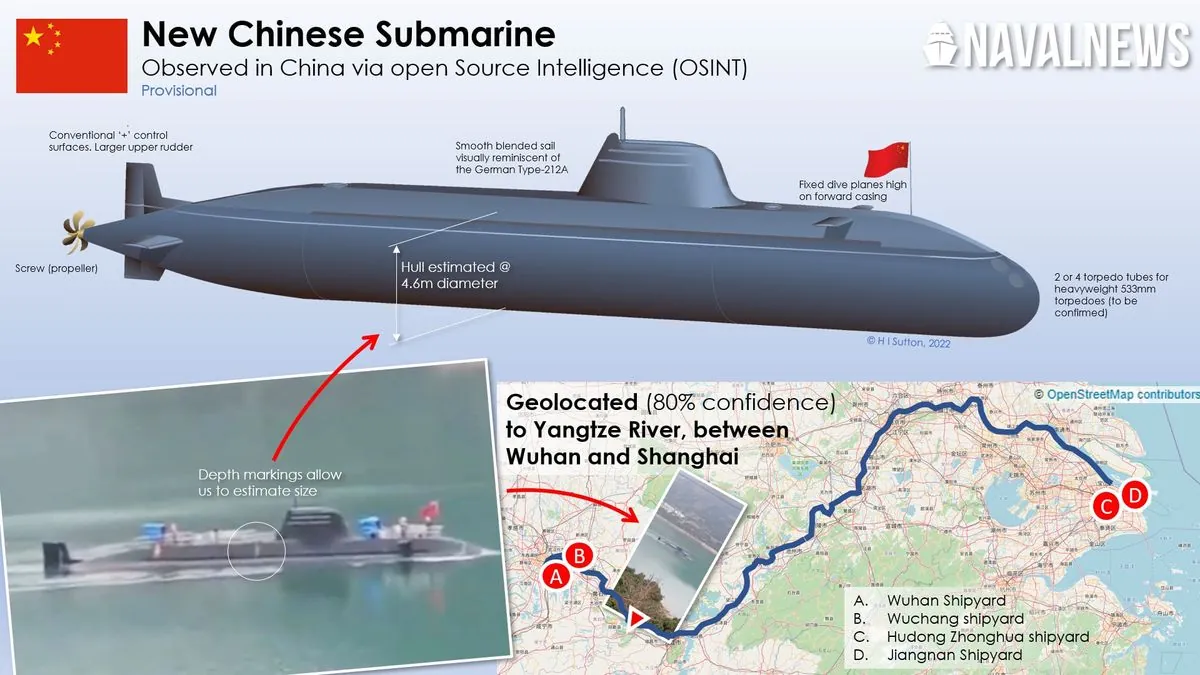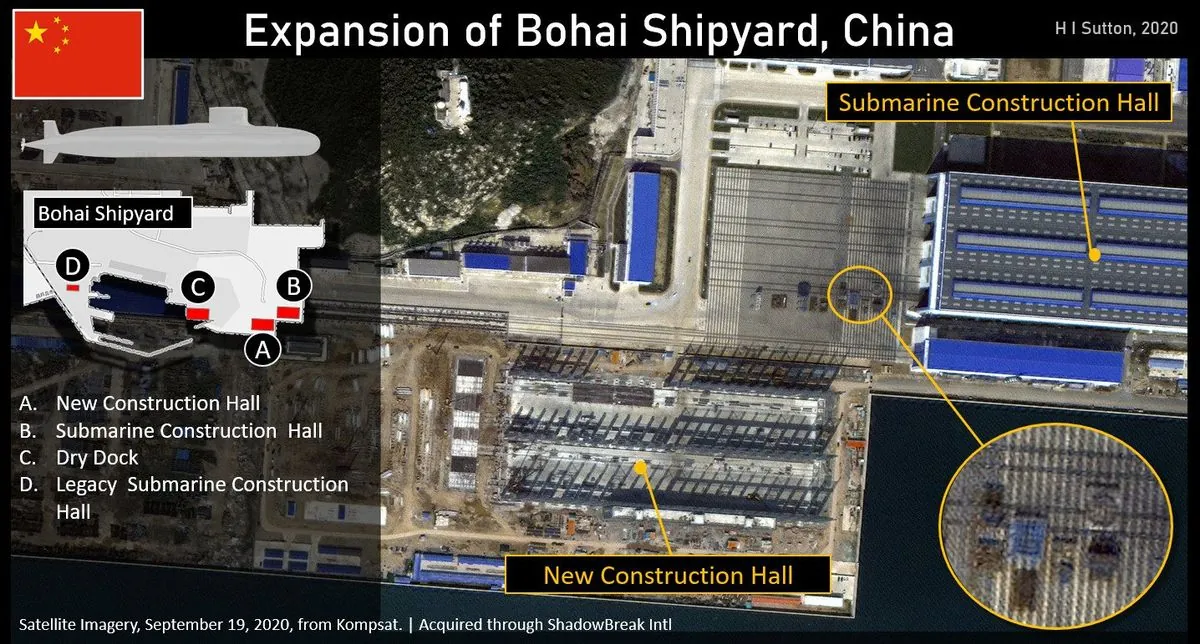China's New Nuclear Submarine Sinks During Construction, U.S. Official Reports
A U.S. defense official revealed that China's latest nuclear-powered attack submarine sank while under construction. The incident, detected via satellite imagery, occurred earlier this year.

A senior U.S. defense official has disclosed that China's newest nuclear-powered attack submarine sank alongside a pier during its construction phase. This incident, involving the first Zhou-class submarine, is believed to have occurred between May and June of this year, approximately 3-4 months ago.
Satellite imagery captured cranes that would be necessary for lifting the submarine from the river bottom, indicating the severity of the situation. The current status of the vessel remains unknown, highlighting the secrecy surrounding the incident.
China's naval expansion has been a subject of intense focus in recent years. The People's Liberation Army Navy (PLAN) has been rapidly modernizing its fleet, with its submarine program playing a crucial role. This expansion began in the 1950s, with China launching its first nuclear submarine in 1974, marking a significant milestone in its naval capabilities.
The PLAN's submarine fleet has grown substantially, now estimated to comprise around 60 vessels. This growth is part of China's broader naval strategy, often referred to as the "String of Pearls," which aims to extend its maritime influence across the Indo-Pacific region.
"We are not familiar with the situation and do not have information to provide."
The U.S. official commenting on the incident stated that it was "not surprising" for China to conceal such an event. This lack of transparency aligns with China's general approach to military matters, particularly those involving advanced technologies like nuclear submarines.
The sinking of the Zhou-class submarine is a setback for China's naval ambitions. Nuclear-powered submarines are critical assets, capable of remaining submerged for months at a time and providing strategic advantages in naval operations.

The United States views China's rising naval power as one of its primary future security concerns. This perspective is shaped by various factors, including China's assertive actions in the South China Sea and its increasing ability to project power globally.
In response to China's naval expansion, the U.S. has been strengthening its alliances in the Indo-Pacific region and implementing strategies like the "Pacific Pivot" since 2011. These efforts aim to maintain a balance of power and ensure freedom of navigation in critical maritime areas.
The incident with the Zhou-class submarine underscores the challenges and risks associated with advanced naval technology development. As China continues to invest in its naval capabilities, including unmanned underwater vehicles (UUVs) and sea-based nuclear deterrence, incidents like this may have significant implications for regional security dynamics.
While the sinking of the submarine is a setback, it is unlikely to significantly alter China's long-term naval modernization efforts. The PLAN has demonstrated remarkable growth in recent years, commissioning its first aircraft carrier, the Liaoning, in 2012 and conducting increasingly frequent long-range deployments.
As tensions between the U.S. and China persist, incidents like these serve as reminders of the complex and often opaque nature of military developments in the region. The international community will undoubtedly continue to monitor China's naval activities closely, as they play a crucial role in shaping the future security landscape of the Indo-Pacific.


































